Abstract
Poliovirus-neutralizing monoclonal antibodies were prepared against type 1, type 2, and type 3 wild laboratory (Mahoney, MEF1, and Saukett) and Sabin vaccine strains. Fifty-five poliovirus laboratory strains and field isolates were assayed by neutralization index test with a panel of homotypic monoclonal antibodies. A total of 27 monoclonal antibodies were used. Two categories of neutralization epitopes were found, i.e., cross-reacting (K), which is present on almost all strains of the same serotype, and strain-specific (V, variable), either wild (VW) or Sabin (VS). Several distinct neutralization epitopes were defined for each of the three poliovirus serotypes in almost every category. The study of antigenic variation of the Sabin type 1 vaccine virus during replication in human intestine showed that the VS neutralization epitope may be lost and even replaced by the VW epitopes of the parental Mahoney virus. A late isolate from a vaccine-fed infant recovered the complete neutralization epitope pattern of the Mahoney strain. Upon in vivo virus replication, a different kind of antigenic variation was also detected in which an epitope lost its function in virus neutralization but kept its antigenic conformation unaltered. Neutralization epitope analysis demonstrated that the presence of VS epitopes on a field isolate suggests the Sabin origin of the strain when the isolate displays the same epitope pattern as the original Sabin virus, or confirms it when the VS epitope(s) is mutually exclusive of VW epitopes. The lack of VS epitopes on a field isolate does not rule out its being of Sabin origin.
Full text
PDF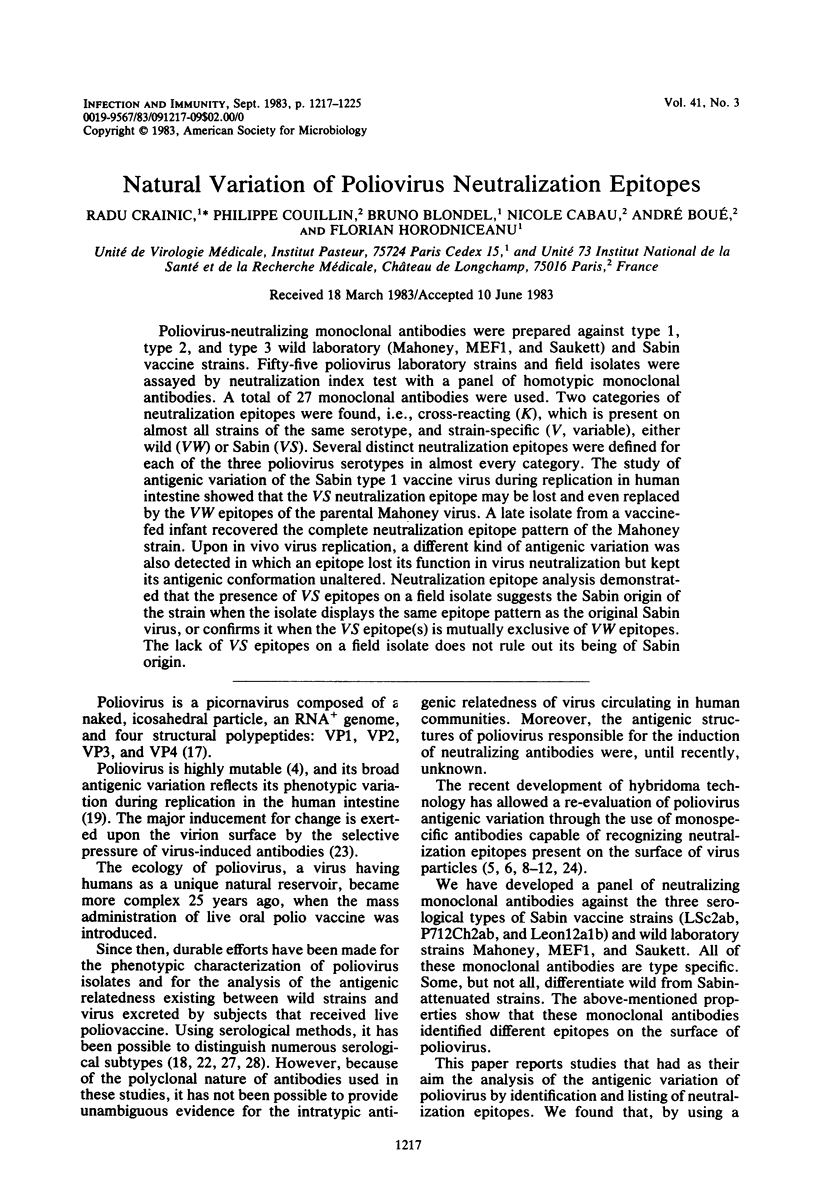
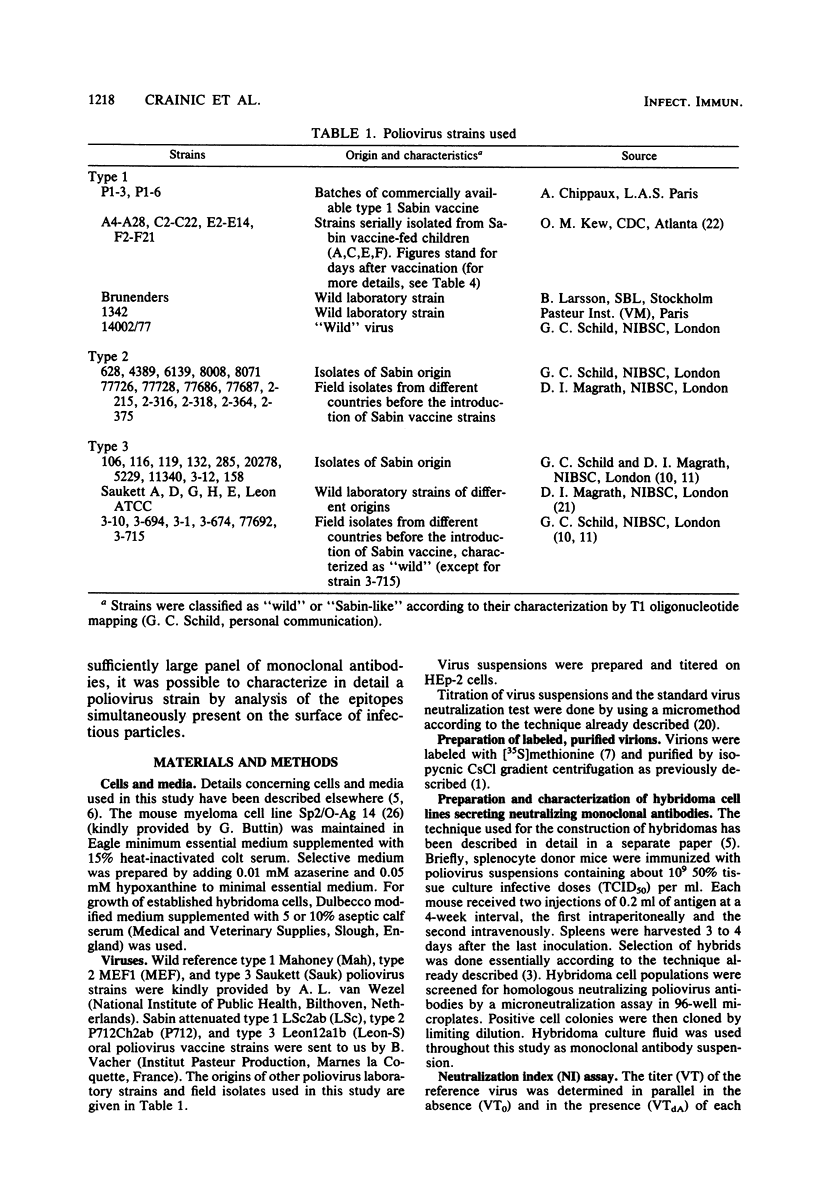
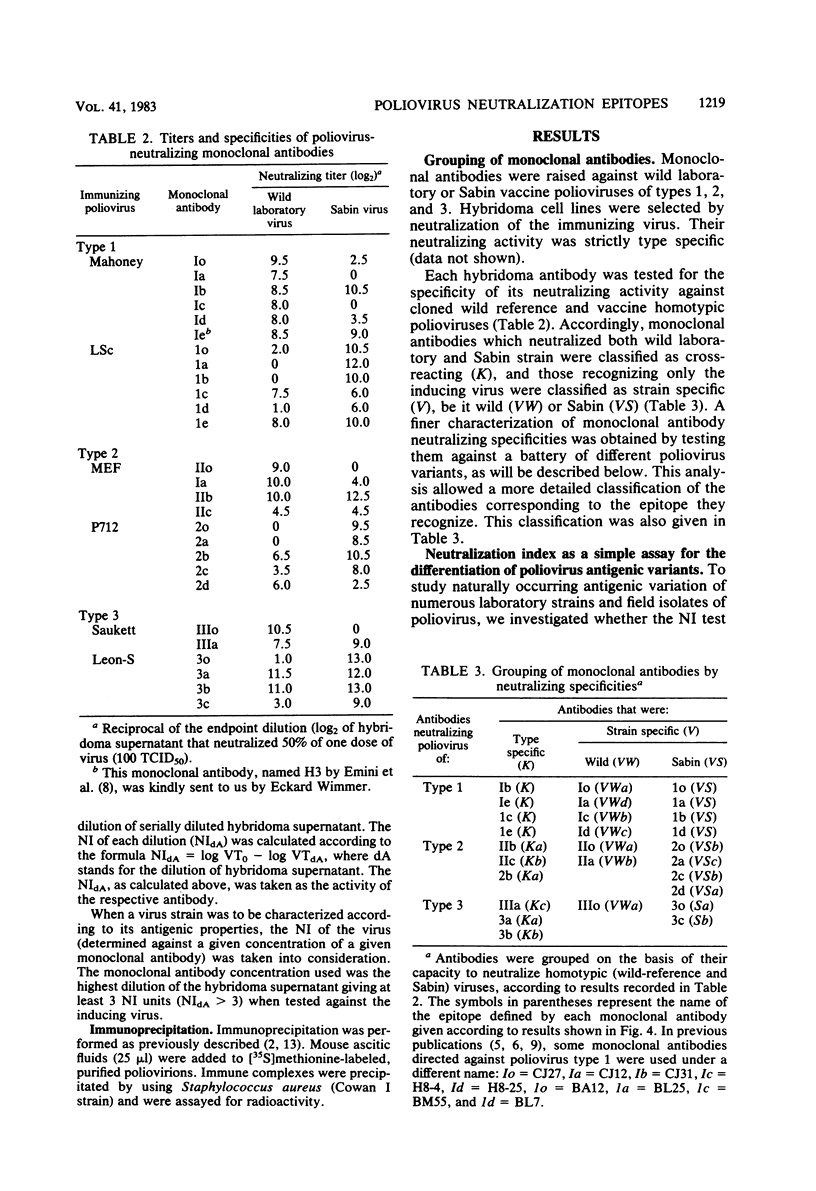
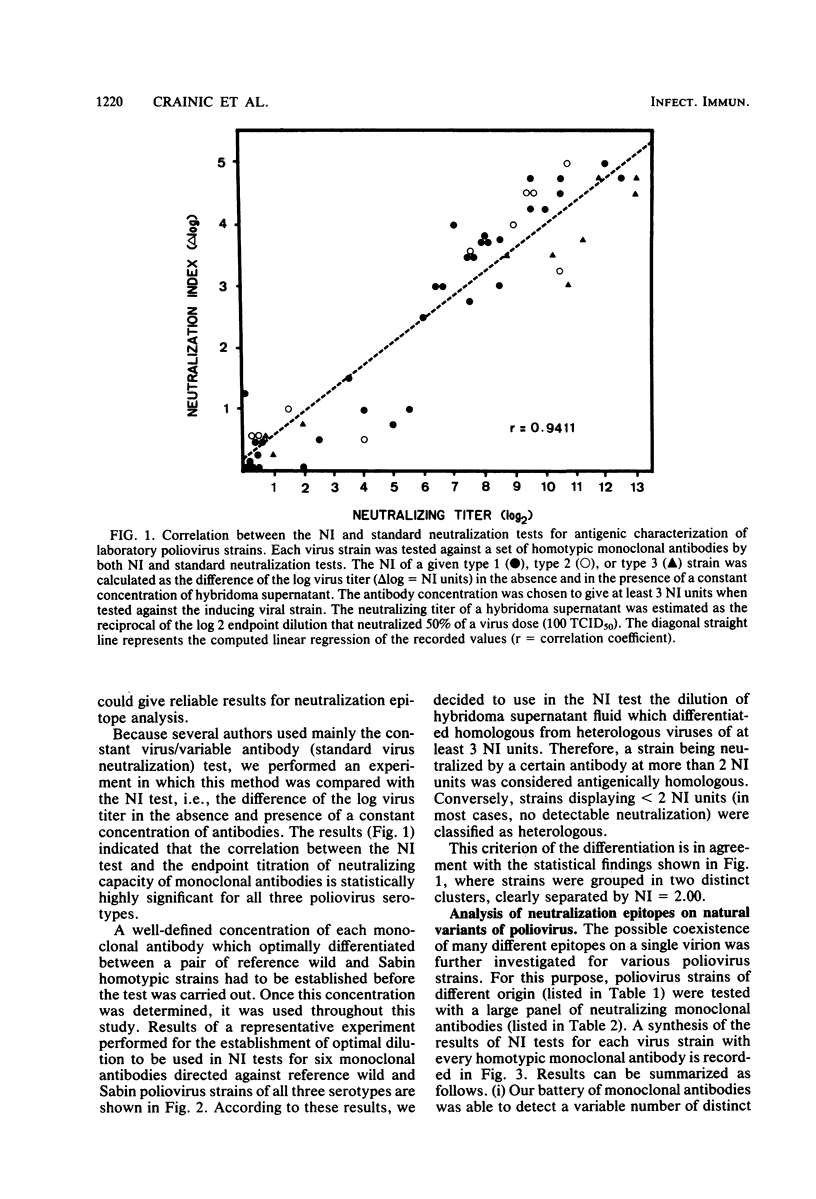
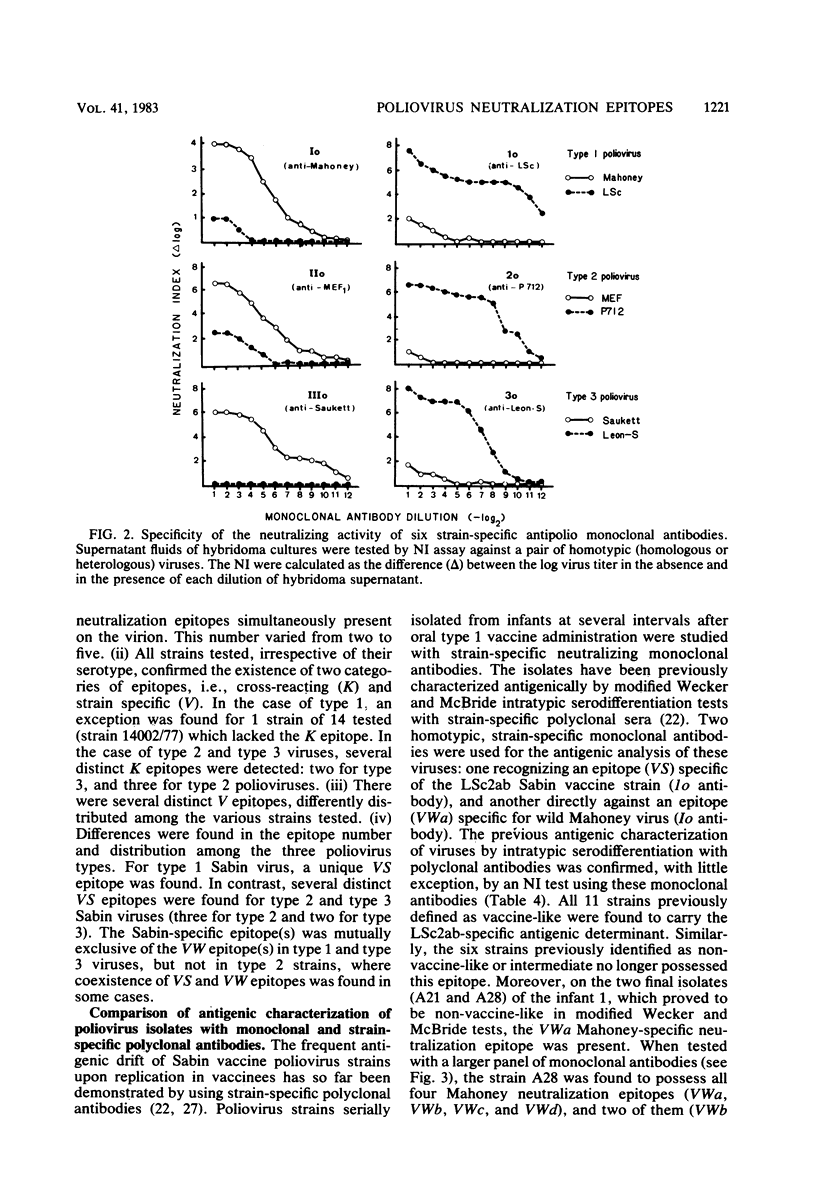
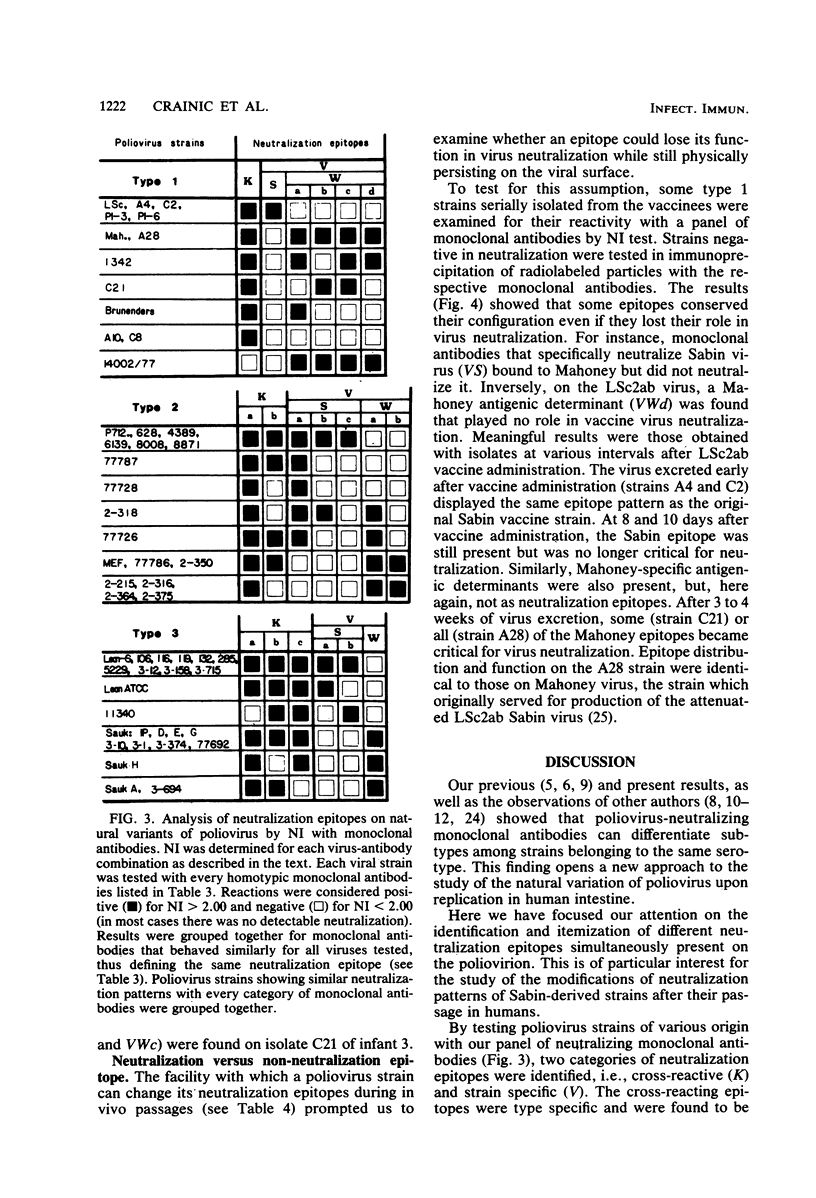
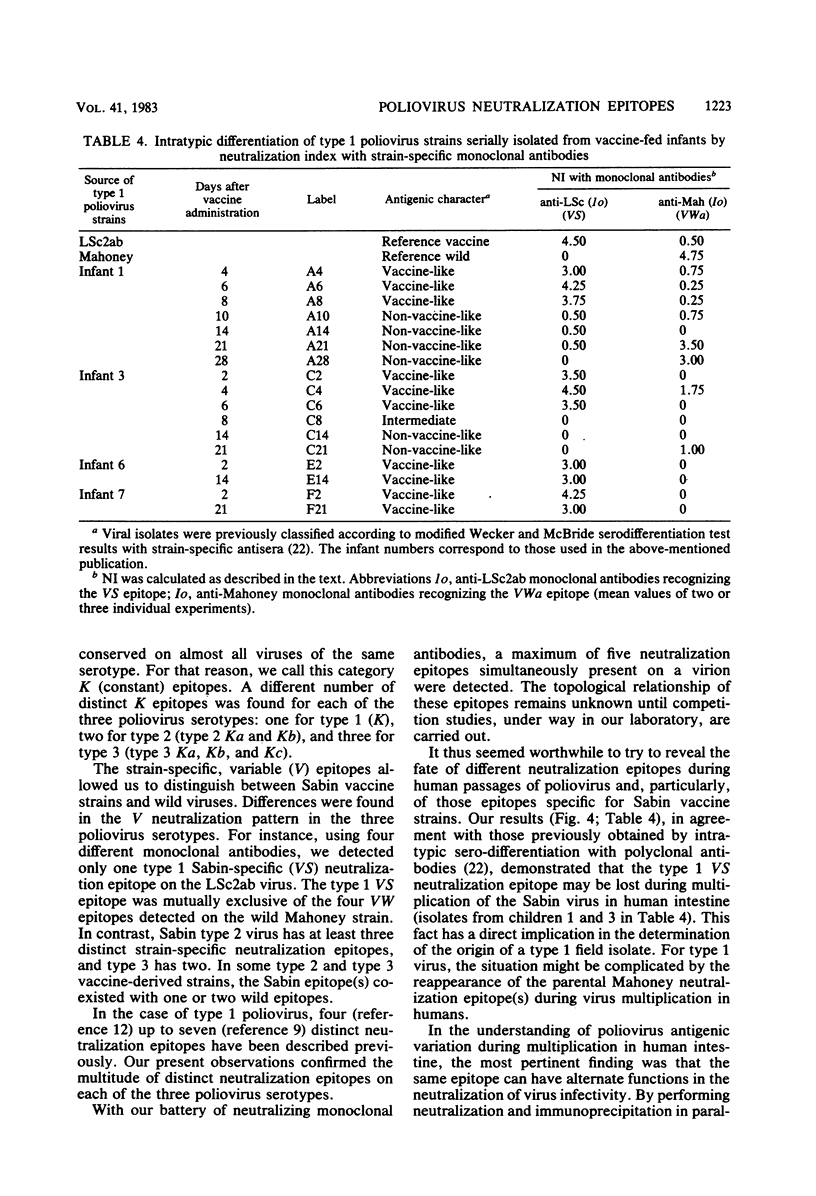
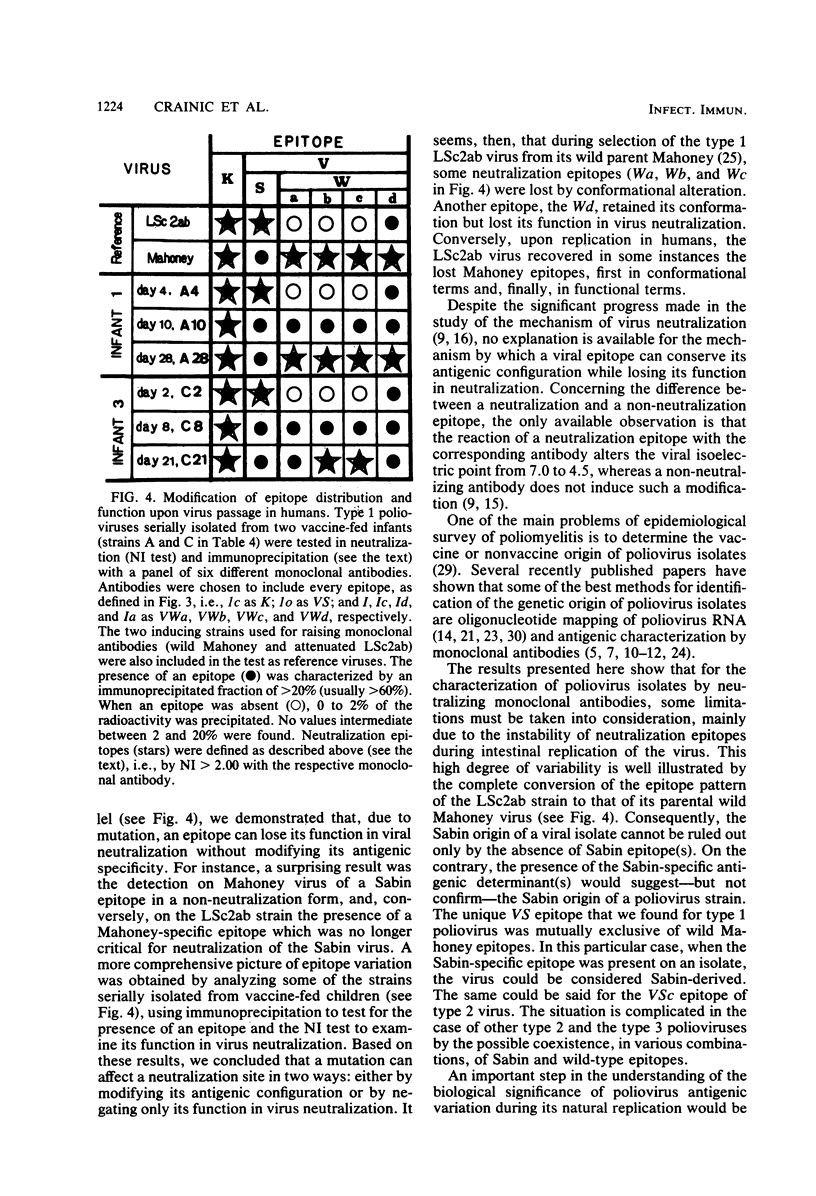
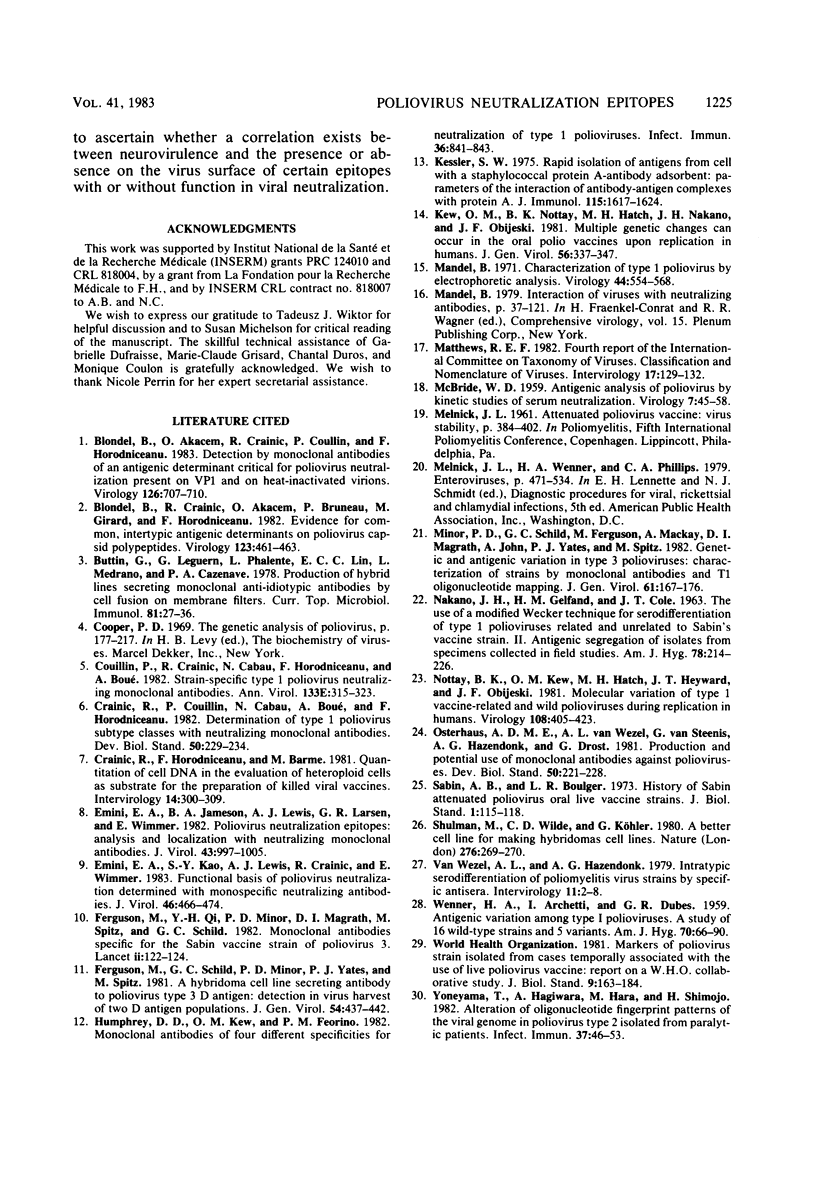
Selected References
These references are in PubMed. This may not be the complete list of references from this article.
- Blondel B., Akacem O., Crainic R., Couillin P., Horodniceanu F. Detection by monoclonal antibodies of an antigenic determinant critical for poliovirus neutralization present on VP1 and on heat-inactivated virions. Virology. 1983 Apr 30;126(2):707–710. doi: 10.1016/s0042-6822(83)80027-0. [DOI] [PubMed] [Google Scholar]
- Blondel B., Crainic R., Akacem O., Bruneau P., Girard M., Horodniceanu F. Evidence for common, intertypic antigenic determinants on poliovirus capsid polypeptides. Virology. 1982 Dec;123(2):461–463. doi: 10.1016/0042-6822(82)90280-x. [DOI] [PubMed] [Google Scholar]
- Buttin G., LeGuern G., Phalente L., Lin E. C., Medrano L., Cazenave P. A. Production of hybrid lines secreting monoclonal anti-idiotypic antibodies by cell fusion on membrane filters. Curr Top Microbiol Immunol. 1978;81:27–36. doi: 10.1007/978-3-642-67448-8_4. [DOI] [PubMed] [Google Scholar]
- Crainic R., Couillin P., Cabau N., Boue A., Horodniceanu F. Determination of type 1 poliovirus subtype classes with neutralizing monoclonal antibodies. Dev Biol Stand. 1981;50:229–234. [PubMed] [Google Scholar]
- Crainic R., Horodniceanu F., Barme M. Quantitation of cell DNA in the evaluation of heteroploid cells as substrate for the preparation of killed viral vaccines. Intervirology. 1980;14(5-6):300–309. doi: 10.1159/000149200. [DOI] [PubMed] [Google Scholar]
- Emini E. A., Jameson B. A., Lewis A. J., Larsen G. R., Wimmer E. Poliovirus neutralization epitopes: analysis and localization with neutralizing monoclonal antibodies. J Virol. 1982 Sep;43(3):997–1005. doi: 10.1128/jvi.43.3.997-1005.1982. [DOI] [PMC free article] [PubMed] [Google Scholar]
- Emini E. A., Kao S. Y., Lewis A. J., Crainic R., Wimmer E. Functional basis of poliovirus neutralization determined with monospecific neutralizing antibodies. J Virol. 1983 May;46(2):466–474. doi: 10.1128/jvi.46.2.466-474.1983. [DOI] [PMC free article] [PubMed] [Google Scholar]
- Ferguson M., Schild G. C., Minor P. D., Yates P. J., Spitz M. A hybridoma cell line secreting antibody to poliovirus type 3 D-antigen: detection in virus harvest of two D-antigen populations. J Gen Virol. 1981 Jun;54(Pt 2):437–442. doi: 10.1099/0022-1317-54-2-437. [DOI] [PubMed] [Google Scholar]
- Ferguson M., Yi-hua Q., Minor P. D., Magrath D. I., Spitz M., Schild G. C. Monoclonal antibodies specific for the Sabin vaccine strain of poliovirus 3. Lancet. 1982 Jul 17;2(8290):122–124. doi: 10.1016/s0140-6736(82)91091-1. [DOI] [PubMed] [Google Scholar]
- Humphrey D. D., Kew O. M., Feorino P. M. Monoclonal antibodies of four different specificities for neutralization of type 1 polioviruses. Infect Immun. 1982 May;36(2):841–843. doi: 10.1128/iai.36.2.841-843.1982. [DOI] [PMC free article] [PubMed] [Google Scholar]
- Kessler S. W. Rapid isolation of antigens from cells with a staphylococcal protein A-antibody adsorbent: parameters of the interaction of antibody-antigen complexes with protein A. J Immunol. 1975 Dec;115(6):1617–1624. [PubMed] [Google Scholar]
- Kew O. M., Nottay B. K., Hatch M. H., Nakano J. H., Obijeski J. F. Multiple genetic changes can occur in the oral poliovaccines upon replication in humans. J Gen Virol. 1981 Oct;56(Pt 2):337–347. doi: 10.1099/0022-1317-56-2-337. [DOI] [PubMed] [Google Scholar]
- Mandel B. Characterization of type 1 poliovirus by electrophoretic analysis. Virology. 1971 Jun;44(3):554–568. doi: 10.1016/0042-6822(71)90369-2. [DOI] [PubMed] [Google Scholar]
- McBRIDE W. D. Antigenic analysis of polioviruses by kinetic studies of serum neutralization. Virology. 1959 Jan;7(1):45–58. doi: 10.1016/0042-6822(59)90176-x. [DOI] [PubMed] [Google Scholar]
- Minor P. D., Schild G. C., Ferguson M., Mackay A., Magrath D. I., John A., Yates J. P., Spitz M. Genetic and antigenic variation in type 3 polioviruses: characterization of strains by monoclonal antibodies and T1 oligonucleotide mapping. J Gen Virol. 1982 Aug;61(Pt 2):167–176. doi: 10.1099/0022-1317-61-2-167. [DOI] [PubMed] [Google Scholar]
- NAKANO J. H., GELFAND H. M., COLE J. T. THE USE OF A MODIFIED WECKER TECHNIQUE FOR SERODIFFERENTIATION OF TYPE 1 POLIOVIRUSES RELATED AND UNRELATED TO SABIN'S VACCINE STRAIN. II. ANTIGENIC SEGREGATION OF ISOLATES FROM SPECIMENS COLLECTED IN FIELD STUDIES. Am J Hyg. 1963 Sep;78:214–226. doi: 10.1093/oxfordjournals.aje.a120339. [DOI] [PubMed] [Google Scholar]
- Nottay B. K., Kew O. M., Hatch M. H., Heyward J. T., Obijeski J. F. Molecular variation of type 1 vaccine-related and wild polioviruses during replication in humans. Virology. 1981 Jan 30;108(2):405–423. doi: 10.1016/0042-6822(81)90448-7. [DOI] [PubMed] [Google Scholar]
- Osterhaus A. D., van Wezel A. L., van Steenis G., Hazendonk A. G., Drost G. Production and potential use of monoclonal antibodies against polio viruses. Dev Biol Stand. 1981;50:221–228. [PubMed] [Google Scholar]
- Shulman M., Wilde C. D., Köhler G. A better cell line for making hybridomas secreting specific antibodies. Nature. 1978 Nov 16;276(5685):269–270. doi: 10.1038/276269a0. [DOI] [PubMed] [Google Scholar]
- WENNER H. A., ARCHETTI I., DUBES G. R. Antigenic variations among type 1 polioviruses; a study of 16 wild-type strains and 5 variants. Am J Hyg. 1959 Jul;70(1):66–90. doi: 10.1093/oxfordjournals.aje.a120065. [DOI] [PubMed] [Google Scholar]
- Yoneyama T., Hagiwara A., Hara M., Shimojo H. Alteration in oligonucleotide fingerprint patterns of the viral genome in poliovirus type 2 isolated from paralytic patients. Infect Immun. 1982 Jul;37(1):46–53. doi: 10.1128/iai.37.1.46-53.1982. [DOI] [PMC free article] [PubMed] [Google Scholar]
- van Wezel A. L., Hazendonk A. G. Intratypic serodifferentiation of poliomyelitis virus strains by strain-specific antisera. Intervirology. 1979;11(1):2–8. doi: 10.1159/000149005. [DOI] [PubMed] [Google Scholar]


